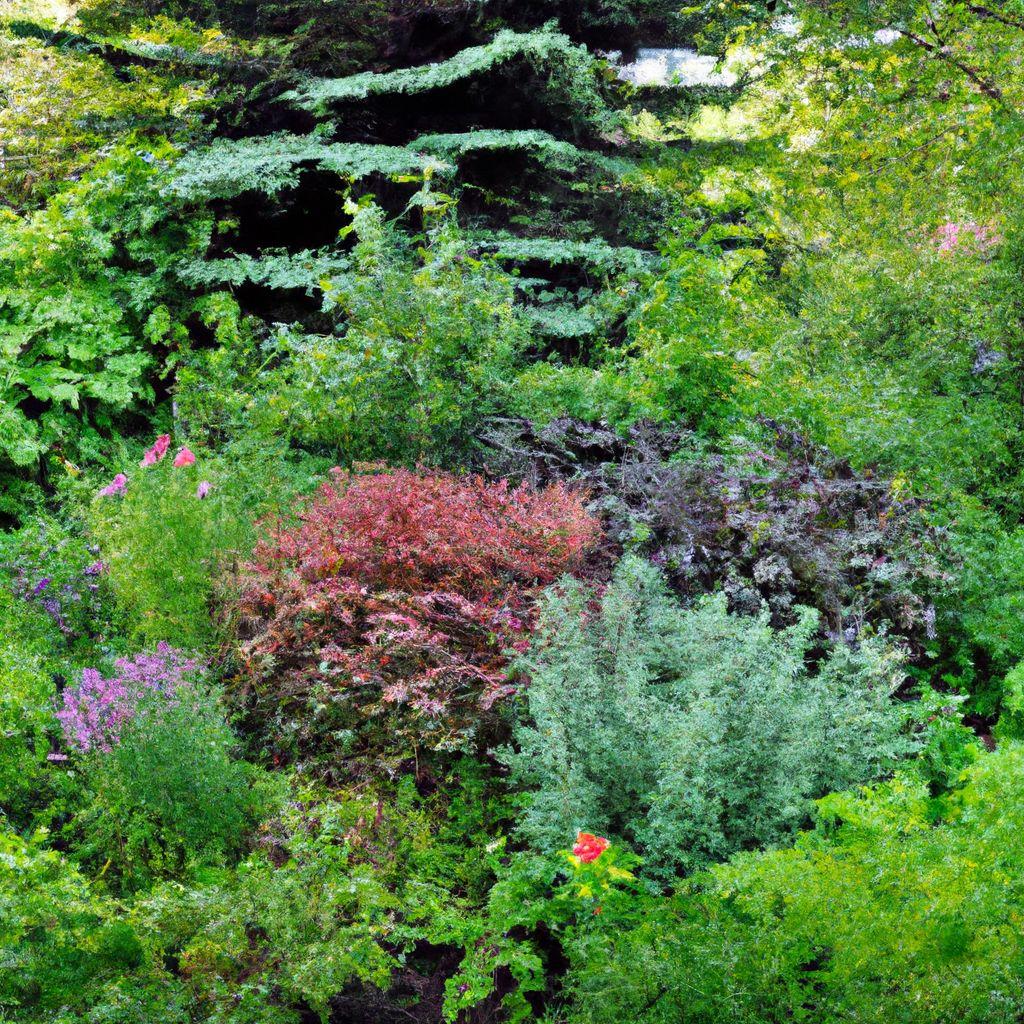Key takeaway:
- Shade gardens provide numerous benefits, such as creating a cooler environment, reducing water evaporation, and providing habitat for shade-loving plants and animals.
- Texture plays a crucial role in shade gardens, as it adds visual interest and creates a sense of depth. Incorporating textured plants helps to create a more dynamic and visually appealing garden.
- When selecting plants for a shade garden, consider using bold-textured plants for shady spots, native plants for woodland gardens, and plants with interesting foliage. Grouping plants with different textures can also enhance the tactile experience in the garden.
Introduction
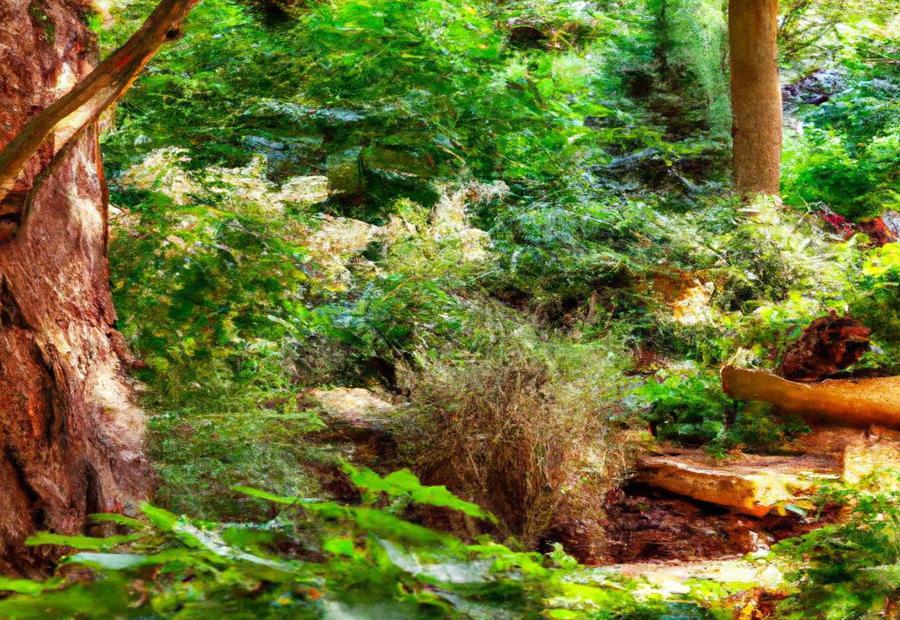
Photo Credits: Gardeninggurus.Org by Charles Baker
A shade garden with textured plants offers a distinct and attractive landscape. Different textures add interest and depth. Texture refers to the surface quality of a plant – smooth, rough, or spiky. Incorporating a variety of contrasting textures creates a captivating and dynamic space.
Textured plants offer practical benefits too. Many shade-loving plants with textured foliage are better able to cope with lower light levels. They can thrive in these conditions. This makes them great choices for creating a vibrant and lively shade garden.
Textured plants can create depth and dimension. Broad-leaved plants, like hostas or ferns, give a lush look. Delicate foliage, like astilbes or bleeding hearts, add intricate detail. Combining textures gives the garden visual complexity.
Overall, a shade garden with textured plants is exciting and practical. Careful selection of contrasting textures creates an engaging space full of interest and beauty.
Understanding the Shade Garden
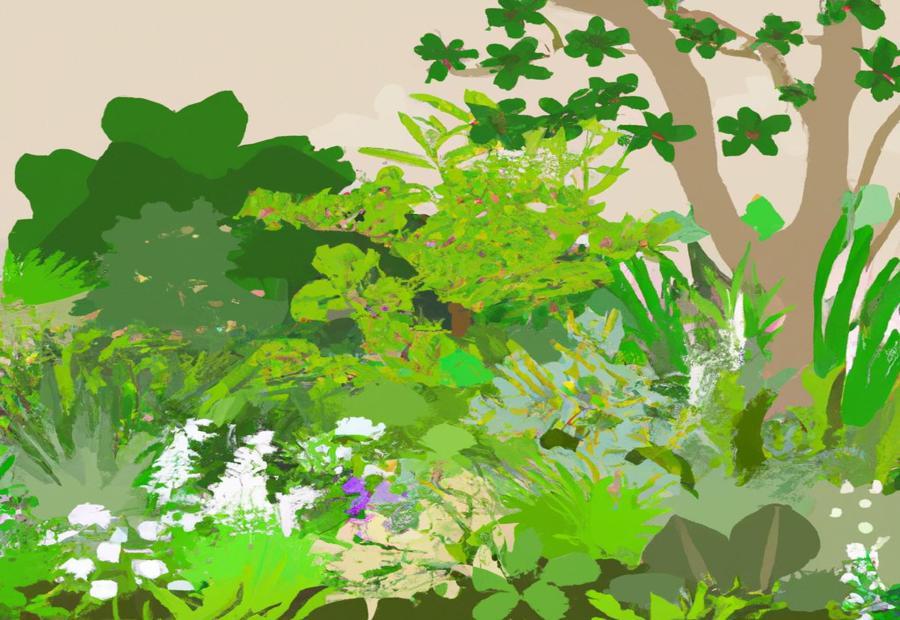
Photo Credits: Gardeninggurus.Org by William Lee
In the world of gardening, understanding the shade garden is crucial. Discover the benefits that shade gardens bring, from providing a peaceful retreat to fostering biodiversity. Get ready to dive into a world of lush greenery and textured plants that thrive in the shade.
Benefits of Shade Gardens
Shade gardens provide a multitude of advantages to both its surroundings and visitors. They create a peaceful, inviting atmosphere by blocking the harsh rays of the sun. In addition, they conserve water by reducing evaporation – especially in arid regions or during droughts. Shade gardens can also be a habitat for wildlife, such as birds, butterflies, and other beneficial insects.
These gardens offer unique details to stand out from sunny landscapes. Textured plants add depth and visual interest. From delicate ferns to bold-leafed hostas, these plants are stimulating to the senses. The different shades of green provide a calming atmosphere.
Experience the benefits of shade gardens firsthand. Find relief from heat, or just enjoy the serenity of nature. Create your own oasis with a shade garden. Add texture for a thrilling plot twist. Enjoy every leaf and petal!
Importance of Texture in a Shade Garden
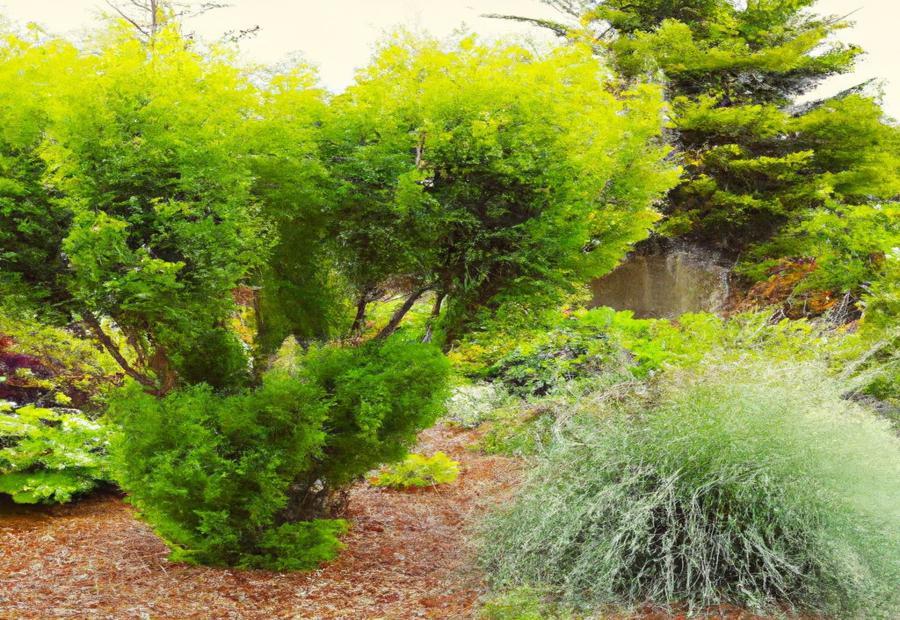
Photo Credits: Gardeninggurus.Org by Vincent Green
When it comes to creating a captivating shade garden, paying attention to texture is essential. In this section, we’ll explore the importance of texture in a shade garden and how it adds depth and visual interest to the overall design. Discover the fascinating world of textured plants for shade gardens, as we unravel the various benefits and characteristics they bring to these enchanting outdoor spaces.
Textured Plants for Shade Gardens
For a visually appealing shade garden, textured plants are essential. Select plants with varied leaf shapes, like ferns with delicate fronds or hostas with broad, ribbed leaves.
Also, add plants with different leaf textures, like lamb’s ear with rough foliage or astilbes with smooth leaves.
For a vibrant and striking garden, pair contrasting colors, such as the bold red of heucheras with the vibrant green of hakone grass.
Include trees or shrubs with interesting bark textures, like the papery peeling bark of river birch or the rough lenticels on silver maple.
Choose flowering plants with unique and intricate flower structures, like foxtail lilies with spiky blooms or bleeding hearts with delicate petals.
Layer heights and forms to create depth and visual interest in your garden.
Group plants with similar textures to maximize their impact and create cohesive areas.
Textured plants not only make your garden visually pleasing but also attract a diverse range of wildlife.
To design a captivating shade garden, incorporate textured plants with varied leaf shapes, diverse leaf textures, contrasting foliage colors, touchable bark, showy flower structures, and layering heights and forms.
Bold-Textured Plants for Shady Spots
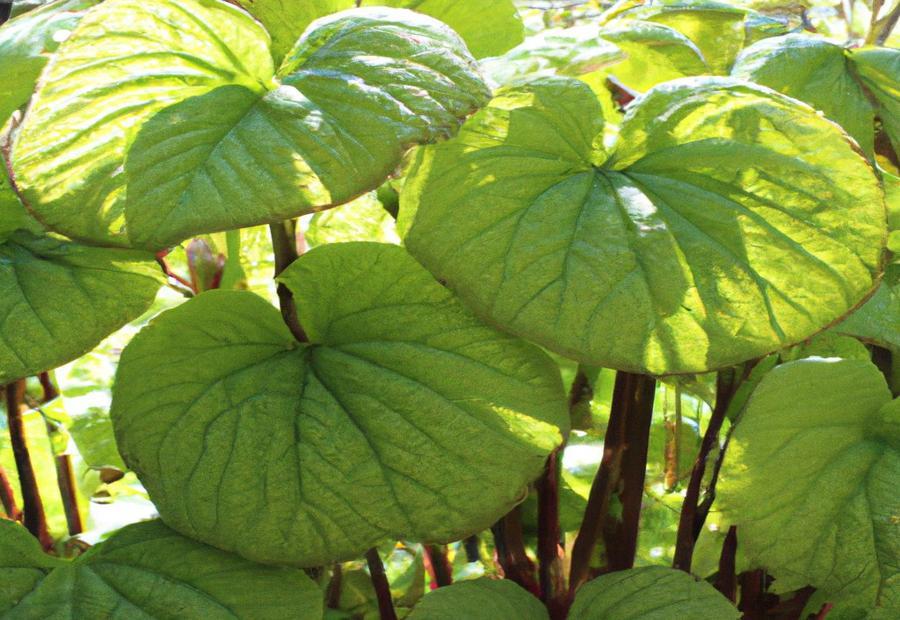
Photo Credits: Gardeninggurus.Org by George Sanchez
Looking to add a touch of bold texture to your shady spots? Discover the allure of bold-textured plants for dry, sunny gardens and moister soils. These plants not only enhance the visual appeal of your shade garden but also thrive in different conditions. Get ready to transform your outdoor space with the vibrancy and unique textures that these plants bring.
Bold-Textured Plants for Dry, Sunny Gardens
Text:
Bold-textured plants are a great way to make dry, sunny gardens pop! These plants have special foliage and texture that can take the intense sunlight and little moisture. They bring life and energy to the garden, adding depth and dimension.
Try Agave Americana for its spiky leaves and architectural form. Yucca filamentosa, with its sword-shaped leaves, makes a dramatic statement. Sedum rupestre ‘Angelina’ has bright yellow needle-like foliage. Perovskia atriplicifolia (Russian sage) has silver-gray foliage and soft lavender-blue flowers. Aloe vera has bold rosette-like foliage. Echinacea purpurea (purple coneflower) has spiky petals and a prominent center cone.
These bold-textured plants will make your dry, sunny garden stand out. They can not only handle the drought, but also create an eye-catching contrast with the sun. Plus, pick low-maintenance varieties to keep your garden vibrant without much work.
Bold-Textured Plants for Moister Soils and Shade
Experience a lush oasis in your garden with bold-textured plants for moister soils and shade. Let these extraordinary plants enchant your senses with unique foliage, creating an immersive atmosphere that lasts through the seasons.
Add texture and depth to your landscape with Hosta plants. Known for their large, textured leaves, these plants will make a statement in any garden.
Astilbe is another great addition, with its feathery plumes adding both texture and color.
Ligularia plants have bold and rounded leaves that create a dramatic effect in shady areas.
Classic Ferns offer an array of textured fronds with different shapes and sizes, perfect for moister soils and shade.
Elephant Ear plants have oversized, heart-shaped leaves that make a big impact in your garden.
Colocasia, also known as Taro or Elephant’s Ear, has large velvety leaves that provide a luxurious look in shady spots.
Native Plants for Texture in Woodland Gardens
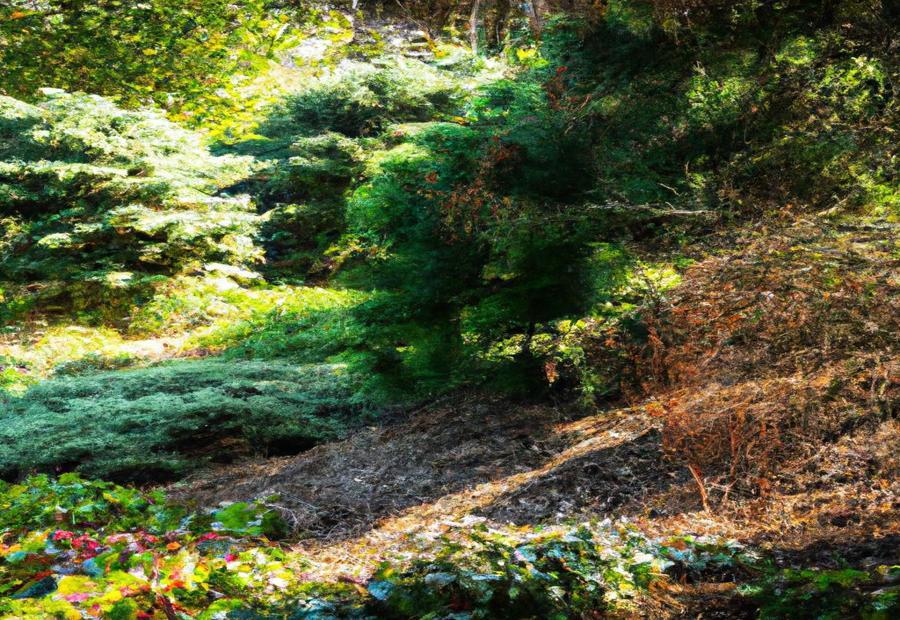
Photo Credits: Gardeninggurus.Org by Robert Brown
Native plants in woodland gardens provide a range of textures. These plants add flair to the garden and support biodiversity. Native plants are adapted to the local environment, making them great for creating texture.
Foliage texture is one benefit of native plants. Hostas, ferns, grasses and mosses bring depth and visual interest. Trees like paperbark maple and river birch have peeling bark that stands out in the garden.
Wildflowers like trilliums and bleeding hearts provide captivating flowers with intricate textures. Plants like yuccas or spiky grasses create interesting forms and shapes that make a focal point.
Native plants also provide habitats for wildlife like birds, butterflies and beneficial insects. Adding these plants to woodland gardens creates an ecosystem that is beautiful and full of life.
Selecting Plants for a Shade Garden Based on Foliage
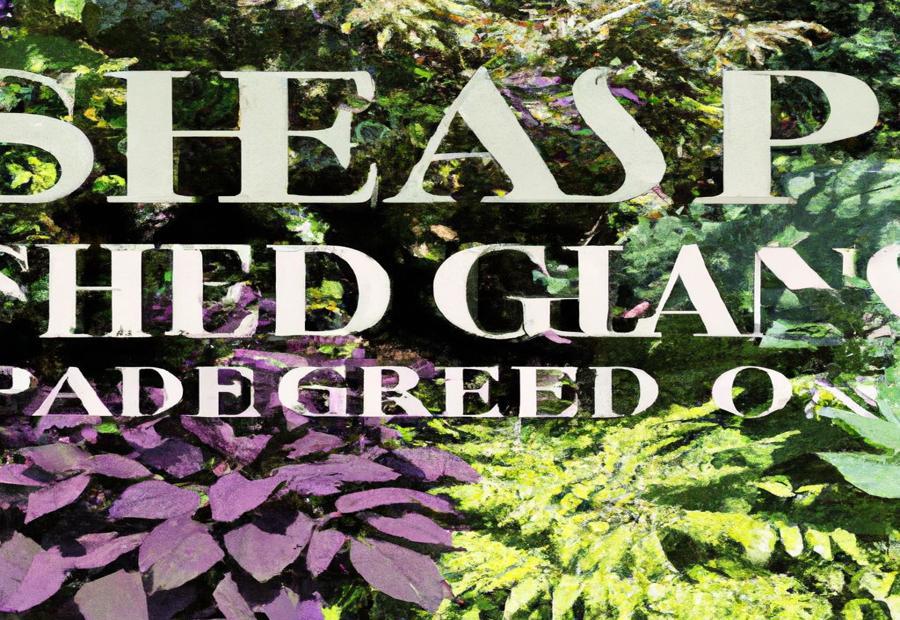
Photo Credits: Gardeninggurus.Org by Walter Nguyen
Choose plants with varying leaf shapes and sizes to create an eye-catching display in the shade garden. Textured plants with unique features, like wrinkles, veining or fuzziness, can add dimension. Variegated foliage can bring vibrancy to the darker shade. And eye-catching patterns or markings, like stripes, spots or marbling, can make the garden visually appealing. To further enhance texture and impact, consider plants with unusual shapes, like heart-shaped or deeply lobed leaves. Or choose plants with different colors on the undersides of their leaves for a surprise element. By carefully selecting a variety of textured plants, a captivating and enchanting space can be created.
Top Plant Picks for Shade Gardens
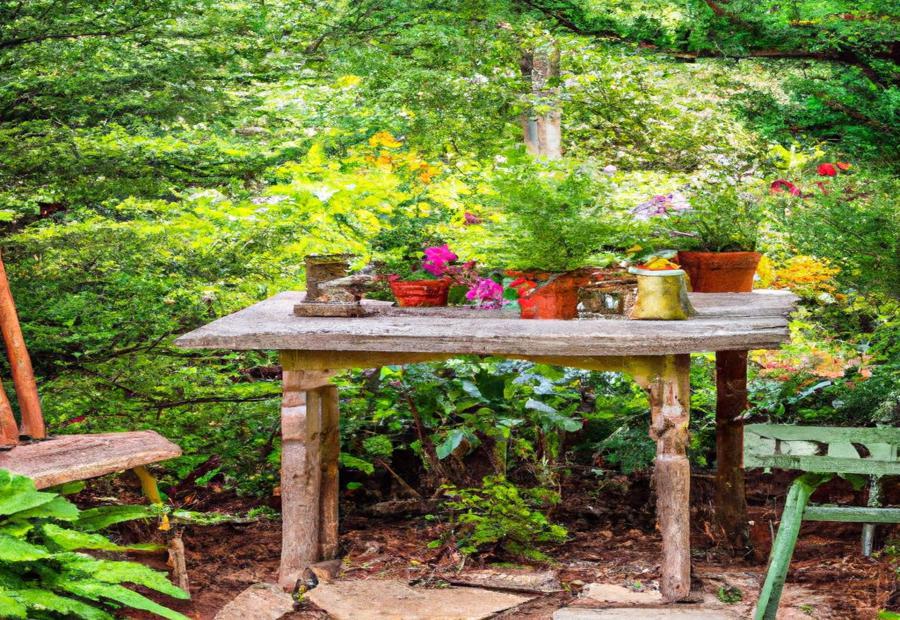
Photo Credits: Gardeninggurus.Org by Michael Garcia
Shade gardens are special – they offer a variety of plant options that thrive in low-light conditions. When it comes to selecting plants, texture is key. Textured plants create depth and dimension. They come in all shapes, sizes, and colors!
Hostas bring elegance with their wide range of textures and shades of green. Ferns bring grace and tranquility, with delicate fronds and feathery foliage. Heucheras, or coral bells, have scalloped and ruffled leaves in vibrant colors. Hosta’s large and lush leaves can be a stunning focal point. Bleeding Hearts add romance with their heart-shaped flowers and fern-like leaves. Astilbes bring an airy touch with their feathery flower clusters in shades of pink, white, and red.
Create a unique shade garden with silver-veined foliage of Brunnera and spiky Japanese forest grass. Incorporate a variety of textures for visual interest and a sense of depth. With careful selection and placement, your shade garden will be a captivating sanctuary of texture and beauty.
Creating a Tactile Experience in the Shade Garden

Photo Credits: Gardeninggurus.Org by Kyle Anderson
Enhance your shade garden with a captivating tactile experience. Discover how grouping plants for texture can bring depth and sensory delight to your outdoor space. (Reference Data: Shade Garden With Textured Plants)
Grouping Plants for Texture
Text:
Grouping plants for texture in a shade garden is a great way to create visual interest and enhance the tactile experience. Contrasting textures are key! Pair smooth leaves with coarse or serrated foliage. Layer textures by combining plants with different growth habits and leaf shapes. Repetition of texture can give the space a unified look. Mix complementary textures too! For an engaging contrast, pair large-leaved plants with finer-textured ones.
Don’t forget about other elements like color, height, and bloom time when designing your shade garden. These factors further enhance the overall aesthetics. Consider light requirements and growing conditions too. Choose plant combinations that thrive together in similar environmental conditions.
By incorporating all these strategies, you’ll have a beautifully textured shade garden that is visually pleasing and enjoyable to touch.
Design Ideas for Vibrant Shade Gardens
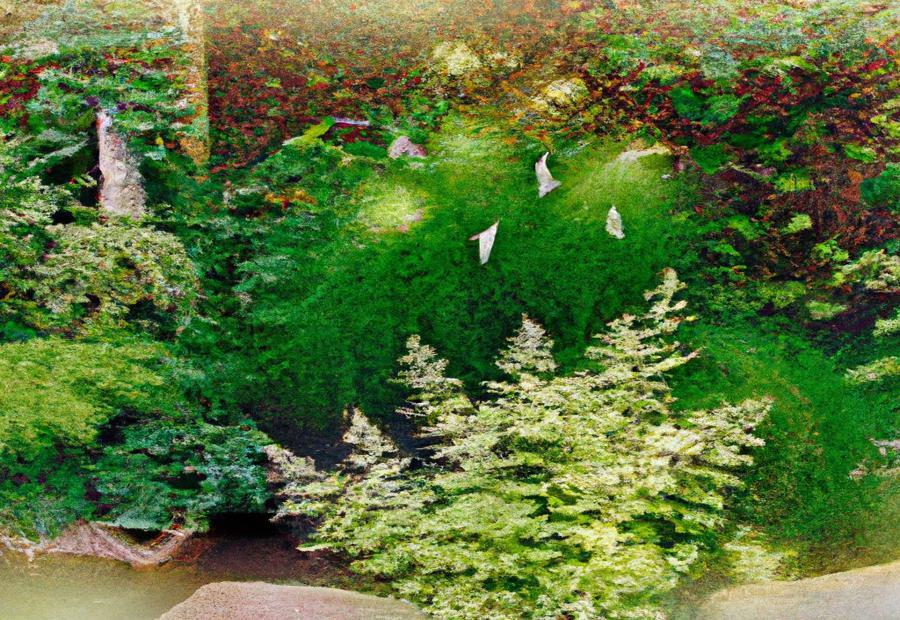
Photo Credits: Gardeninggurus.Org by William Johnson
Looking to bring life and vibrance to your shady yard? In this section, we will explore design ideas for creating vibrant shade gardens. Discover tips for adding a pop of color to those shaded areas, transforming your outdoor space into a captivating oasis. With a focus on textured plants, find inspiration to cultivate a dynamic and visually stunning garden that thrives in the shade.
Tips for Adding Color to Shady Yards
Adding color to a shady yard can improve its overall look and make it more inviting. Follow these tips to make it happen!
- Choose shade-tolerant plants with colorful foliage or blooms. This will make sure that your plants will survive and add a splash of color. You can also use contrasting colors to create a striking effect.
- Include other elements to bring color to your shaded yard. Place containers with bright flowers or foliage in strategic places. Outdoor artwork or accessories in bold colors will also work.
- Add colorful furniture, cushions, or umbrellas to your seating areas. This will not only provide color but will also make your yard more comfortable.
- Use elements like decorative planters or garden sculptures in vibrant colors to create focal points. These will draw the eye and add visual interest.
- When selecting plants for your shady yard, make sure to pick ones that thrive in shade conditions and have vibrant foliage colors. Utilize different shades of green, purple, burgundy, and red to create depth.
- Also, consider the texture of the plants. Different shapes and sizes will create an interesting play of light and shadow. For instance, combine plants with broad leaves (like hostas or ferns) with those that have fine-textured foliage (like astilbes or heucheras).
By utilizing these tips, you can create a captivating and enjoyable outdoor space. Select shade-tolerant plants with vibrant colors and varied textures to make your shady yard a beautiful oasis!
Conclusion

Photo Credits: Gardeninggurus.Org by Keith Nguyen
Shade gardening can be taken to the next level by introducing textured plants. Not only do they add visual interest, but also provide a tactile experience for visitors. With different leaf shapes, sizes, and textures, these plants create an exciting and stimulating environment.
In a shade garden, incorporating textured plants is key for an aesthetically pleasing result. The Reference Data stresses the importance of using these plants to form a visually stimulating and inviting space. Utilizing glossy, velvety, or spiky leaves creates a sensory experience that captures and encourages exploration.
Moreover, the Reference Data points out the value of planting various sizes. Combining tall grasses or low-lying ground covers causes a layered effect, increasing depth and dimension.
In addition, different leaf shapes contribute to a more textured garden. Broad, lance-shaped, or deeply lobed leaves all offer unique textures that create a beautiful tapestry when combined.
By using these tips in your shade garden, you can make a captivating and textured space. Don’t miss out on the opportunity to turn your garden into a sensory oasis. Explore the range of plants with unique leaf textures, sizes, and shapes and let your garden flourish with texture. Appreciate the beauty and intrigue of textured plants in shaded areas.
To sum up, using textured plants is vital for creating a visually pleasing and engaging shade garden. Different leaf textures, sizes, and shapes add depth, dimension, and sensory experiences. By following these strategies, you can transform your garden into a captivating oasis.
Some Facts About Shade Garden With Textured Plants:
- ✅ Bold-textured plants are excellent choices for shade gardens as they create a tropical feel. (Source: finegardening.com)
- ✅ Bold-textured plants should be used sparingly as anchors among finer-textured species in shade gardens. (Source: finegardening.com)
- ✅ Bold-textured plants with large leaves and blossoms should not be crowded together in shade gardens. (Source: finegardening.com)
- ✅ Native shade plants are a great choice for woodland gardens as they have acclimated to shade exposure. (Source: gardeningknowhow.com)
- ✅ Shade gardens can be created in lower light conditions by prioritizing foliage over blooms. (Source: bhg.com)
FAQs about Shade Garden With Textured Plants
What is a shade garden and how do I create one?
A shade garden is a garden bed or area that receives minimal direct light, typically due to the presence of mature trees or other structures. To create a shade garden, start by selecting shade-tolerant plants that thrive in low light conditions. Consider plants with interesting foliage textures and colors to create a visually appealing garden. You can also incorporate shade-loving groundcovers and flowering shrubs to add variety and color to the space.
What are some examples of shade-loving plants with textured foliage?
There are many shade-loving plants with textured foliage that can add visual interest to your garden. Some examples include the leopard plant, false aralia, farfugium japonicum, lady’s mantle, and oakleaf hydrangea. These plants have unique foliage characteristics such as umbrella-shaped leaves, variegated patterns, or large lobed leaves. Incorporating these plants in your shade garden can create a lush and textured look.
How can I design a shade garden path?
Designing a shade garden path can add structure and purpose to your garden. Start by choosing a material for your path, such as pavers or dark wood chips. Consider using low stone walls or edging plants like Japanese forest grass to define the path. Surround the path with shade-loving plants like hostas and ferns to create a visually appealing and cohesive look.
What are some tips for creating an oasis in a shady garden?
To create a serene and relaxing oasis in a shady garden, consider incorporating certain elements. Add comfortable seating, such as a bench or bistro table, where you can relax and enjoy the surroundings. Use tactile materials like smooth stones or soft cushions to enhance the sensory experience. You can also add a small pot of flowers or a water feature, such as a fountain or stream, to bring a soothing element to your garden.
What are some shade-tolerant groundcovers that can add color to my garden?
Shade-tolerant groundcovers are a great way to add color and fill in gaps in your garden beds. Some examples include golden creeping Jenny, ajuga, and hosta. These low-growing plants not only provide attractive carpet-like coverage but also suppress weed growth. Consider planting these groundcovers underneath taller shade-loving plants like hostas or ferns for a vibrant and well-rounded garden bed.
Where can I find more shade garden design ideas and tips?
If you’re looking for more inspiration and tips for designing a shade garden, there are various resources available. You can read articles from gardening magazines like Martha Stewart Living or Better Homes & Gardens, which often feature design ideas and plant recommendations. You can also explore online gardening websites and blogs, such as Rainy Side or Gardening Know How, for detailed guides and expert advice on shade gardening.


